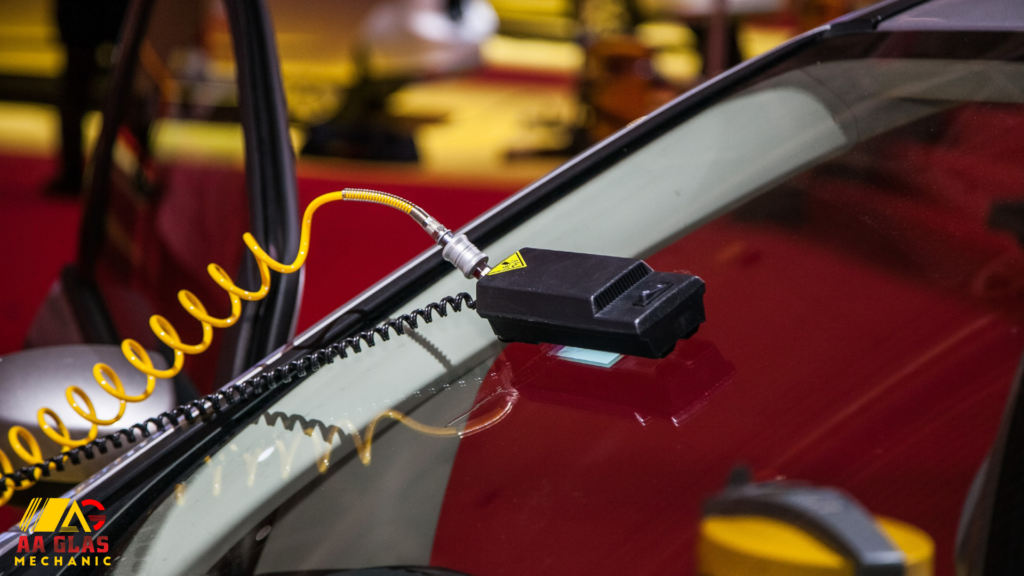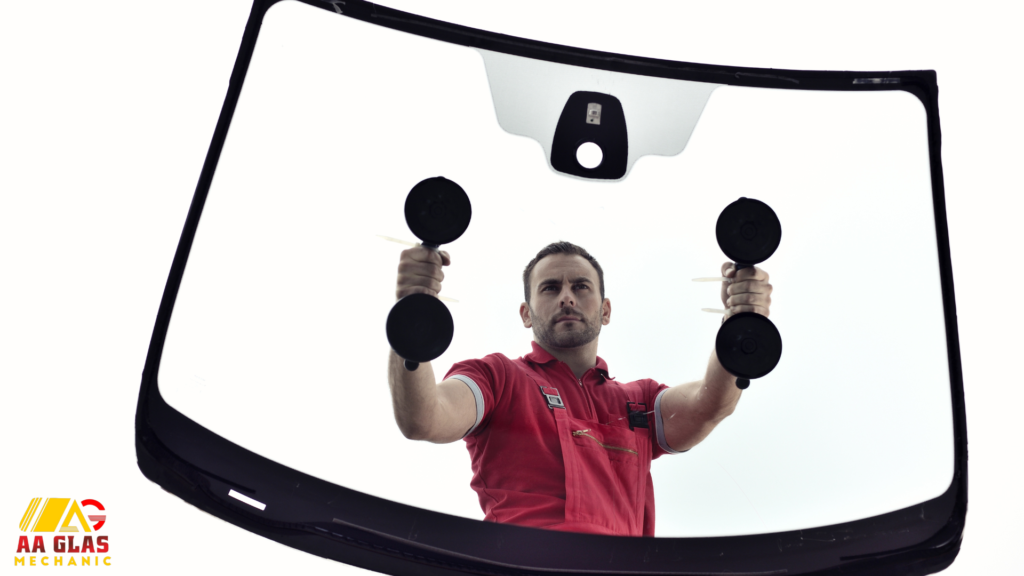
Windshields are often an overlooked part of a car’s safety system, but they play a crucial role in protecting drivers and passengers. Over the years, windshield technology has transformed from basic glass panels to advanced safety and support features essential in modern vehicles. Today’s windshields aren’t just about visibility and comfort; they integrate complex technology that contributes to driver safety, car structural integrity, and even enhanced driving assistance systems. In this article, we’ll journey through the history of windshield technology, from the early days of auto glass to the cutting-edge advancements that keep us safer on the road today.
Introduction: Importance of Windshield Technology in Modern Vehicles
Windshields are more than just windows for viewing the road. As the automotive industry has advanced, so too has the role of the windshield. Today’s windshields protect occupants from wind, debris, and weather while providing structural support to the car. Additionally, modern windshields are integral to Advanced Driver Assistance Systems (ADAS), which enhance driver safety by providing features like collision alerts, lane departure warnings, and automated braking.
A cracked or compromised windshield not only affects visibility but can also disrupt the effectiveness of these safety systems, underlining the importance of professional windshield care.
Early Days of Auto Glass: Simple Glass Panels to Initial Safety Innovations
When automobiles first hit the roads in the late 19th century, windshields weren’t even part of the design. Early cars, like the Ford Model A, didn’t include any sort of protection for drivers against wind, dirt, or debris. Drivers would often wear goggles to protect their eyes, making every drive something of an adventure.
The first windshields appeared in the early 1900s, but these were simple, flat pieces of glass that offered little protection in case of an accident. When they shattered, they broke into sharp shards, posing a serious danger to passengers. The glass used was identical to the kind used in windows, offering no structural support and breaking easily under stress.
As cars became faster and more common on the roads, so did accidents, which led to calls for improved safety in vehicle design. The first step toward safer windshields came with the development of laminated glass.
The Introduction of Laminated and Tempered Glass

The transition from basic glass to laminated and tempered glass was one of the most significant advances in windshield safety. In 1903, a French chemist named Édouard Bénédictus accidentally discovered laminated glass when he dropped a glass flask coated with cellulose nitrate, causing it to crack but stay intact. This discovery was pivotal, as it revealed that a protective layer could keep glass from shattering into dangerous shards.
Laminated glass consists of two layers of glass with a layer of plastic in between. This plastic layer, typically polyvinyl butyral (PVB), holds the glass together upon impact, preventing it from shattering into sharp pieces. By the 1920s, laminated glass was being used in cars, significantly improving passenger safety in case of accidents.
Tempered glass, introduced in the 1930s, also played a crucial role in automotive glass safety. Tempered glass is created by heating and rapidly cooling the glass, which increases its strength and changes its breaking pattern. When broken, tempered glass shatters into small, blunt pieces instead of sharp shards, making it safer for passengers. Tempered glass became the standard for side and rear windows, while laminated glass remained the choice for windshields due to its structural advantages.
Safety Advancements Through the Decades: Standards and Regulations
The 1950s and 1960s brought a heightened focus on road safety, and windshields were no exception. As vehicle manufacturing evolved, countries like the United States implemented strict regulations requiring safety glass in all vehicles. Laminated glass became the required standard for front windshields, providing the safety, durability, and shatter resistance essential for protecting passengers.
In 1970, the U.S. Federal Motor Vehicle Safety Standards (FMVSS) were established, setting guidelines for the materials and safety testing procedures for windshields. These regulations ensured that all windshields met minimum impact resistance standards and performed well under various conditions, such as collisions and rollovers.
As cars continued to evolve, so did windshield regulations. The 1980s and 1990s saw additional improvements in adhesive technology, allowing windshields to be securely bonded to the car’s frame. This innovation not only improved the structural integrity of the vehicle but also allowed windshields to provide greater support to airbags, further enhancing passenger safety.
21st Century Innovations: ADAS, Rain Sensors, HUD, and More
In the 21st century, windshields became more technologically advanced, going beyond protection to play an integral role in driver assistance systems. Advanced Driver Assistance Systems (ADAS) are now integrated into many windshields, transforming them into critical elements of a car’s safety network. ADAS features that use the windshield include:
- Lane Departure Warning and Lane Keep Assist: Cameras installed near or on the windshield detect lane markings, alerting drivers if they begin to drift.
- Collision Avoidance Systems: These systems use sensors and cameras to monitor nearby objects, assisting with automated braking and collision prevention.
- Rain Sensors: Windshields equipped with rain sensors automatically activate the wipers when they detect moisture, improving visibility in rainy conditions.
- Heads-Up Displays (HUD): HUD technology projects important driving information, such as speed and navigation, directly onto the windshield, allowing drivers to stay focused on the road without having to glance down.
These modern features have turned the windshield into an interactive safety hub, requiring even more precision and skill in manufacturing, installation, and repair. With so many safety components integrated into today’s windshields, it’s essential to trust professionals like AA Glas Mechanic for any repair or replacement.
How Windshield Technology Enhances Driving Safety
The technological advances in windshield design do more than just provide convenience; they enhance driver and passenger safety. Here are a few ways in which modern windshield technology protects you on the road:
- Enhanced Structural Support: Windshields now contribute up to 45% of a vehicle’s structural strength in front-end collisions and up to 60% in rollovers. Laminated glass helps windshields remain intact, preventing passengers from being ejected.
- Improved Airbag Support: The windshield acts as a backstop for passenger-side airbags, helping them deploy in the correct position. A compromised windshield can lead to malfunctioning airbags, underscoring the importance of keeping your windshield in top condition.
- Reduction of Glass-Related Injuries: Laminated and tempered glass help reduce the risk of injuries from broken glass in accidents, as they are designed to break safely without creating sharp, dangerous shards.
- Driving Assistance Systems (ADAS): Modern windshields assist with ADAS functions, improving response times and reducing the chances of driver errors that lead to accidents.
Why Quality Matters in Windshield Replacement and Repair

With so many critical safety features relying on the windshield, using high-quality glass and adhesives during repair or replacement is essential. A poor-quality windshield or an improper installation can compromise the car’s entire safety system, leading to increased risks during accidents. Issues like poor visibility, structural weakness, and misaligned ADAS cameras can arise from substandard windshield repairs.
Choosing a reputable service provider, like AA Glas Mechanic, ensures that you receive a quality windshield and that your car’s ADAS and safety features are properly calibrated and functional. At AA Glas Mechanic, we understand the nuances of each vehicle model, ensuring every replacement or repair meets strict safety standards.
The Role of AA Glas Mechanic in Providing High-Quality Windshield Services
At AA Glas Mechanic, we’re dedicated to keeping you safe on the road with our expert windshield repair and replacement services in Pharr, Texas, and throughout the Rio Grande Valley (RGV). Our commitment to quality and customer satisfaction makes us a trusted name in the industry.
Here’s why we stand out:
- Certified Technicians: Our technicians are certified and trained in the latest windshield technologies, including ADAS calibration.
- Advanced Tools and Techniques: We use top-of-the-line equipment and materials to ensure precise, safe installations.
- Mobile Services Across the RGV: Our mobile repair and replacement services bring our expertise to your doorstep, so you can get back on the road quickly and safely.
- Insurance-Friendly Process: We work with most insurance providers, handling the paperwork to ensure you get the coverage you need.
- Lifetime Warranty: We stand by our work, offering a lifetime warranty on most services, so you can trust that our repairs and replacements are built to last.
Whether you’re dealing with a minor chip or require a full windshield replacement, AA Glas Mechanic is here to keep your windshield—and your car’s safety systems—in top shape.
Conclusion: The Future of Windshield Technology
As the automotive industry continues to evolve, so will windshield technology. With advancements in augmented reality (AR), solar coatings, and smart glass that can adjust transparency based on lighting conditions, the windshields of tomorrow will be even more integrated into our driving experience.
At AA Glas Mechanic, we’re excited to stay on the cutting edge of windshield technology, ready to serve the ever-growing needs of drivers in the RGV. So, whether you need a simple repair, a full replacement, or help with a complex ADAS system calibration, our team has the expertise and dedication to keep you safe.
For trusted windshield services, contact AA Glas Mechanic today and let us help you keep your windshield—and your vehicle—ready for the road ahead.





